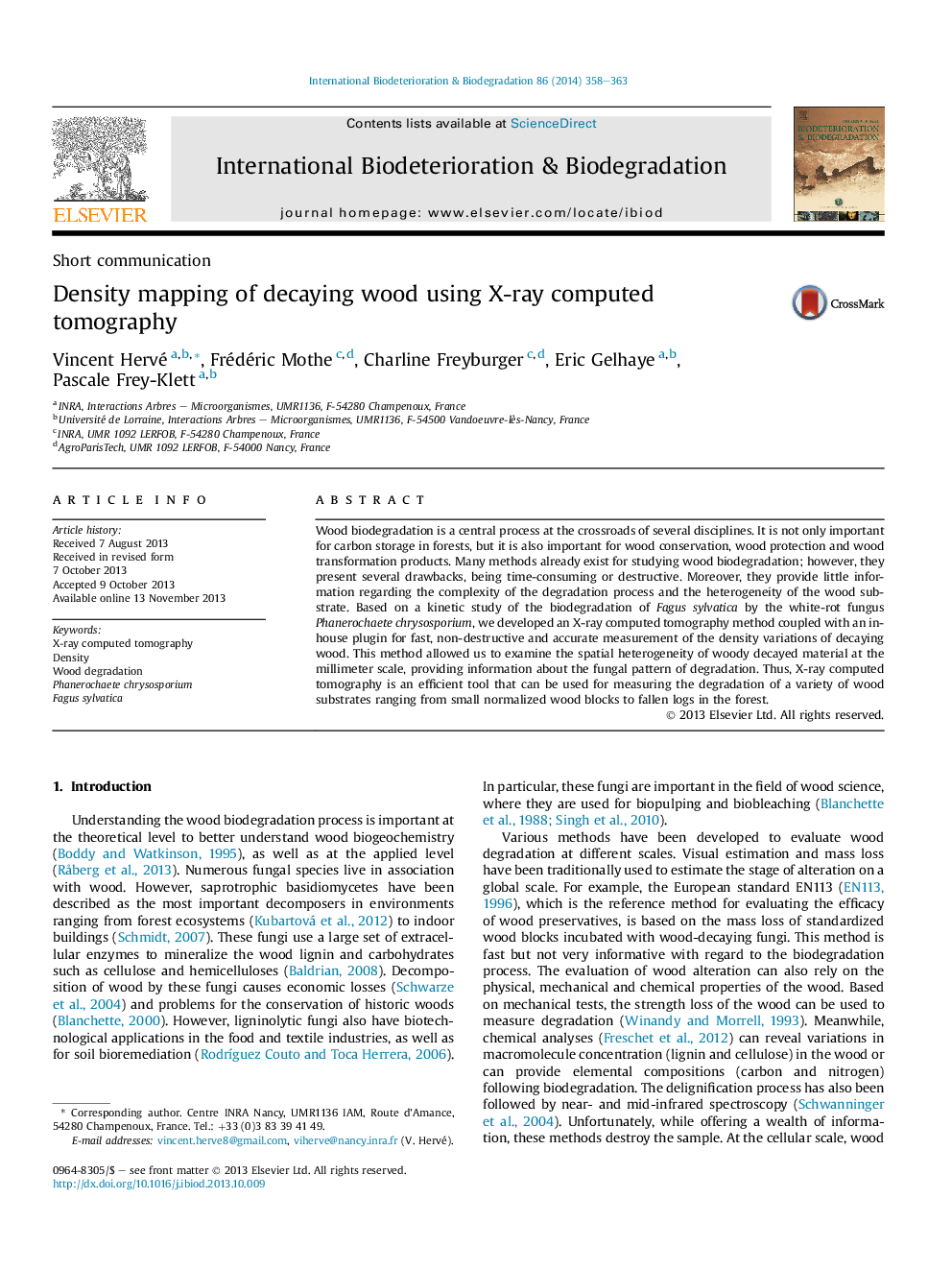| Article ID | Journal | Published Year | Pages | File Type |
|---|---|---|---|---|
| 4364823 | International Biodeterioration & Biodegradation | 2014 | 6 Pages |
•We monitored wood degradation by a white-rot fungus using X-ray computed tomography.•Density mapping of wood blocks showed a heterogeneous process.•Beechwood zones with lowest density were preferentially degraded by the fungus.•X-ray computed tomography is a fast and accurate method to study wood degradation.
Wood biodegradation is a central process at the crossroads of several disciplines. It is not only important for carbon storage in forests, but it is also important for wood conservation, wood protection and wood transformation products. Many methods already exist for studying wood biodegradation; however, they present several drawbacks, being time-consuming or destructive. Moreover, they provide little information regarding the complexity of the degradation process and the heterogeneity of the wood substrate. Based on a kinetic study of the biodegradation of Fagus sylvatica by the white-rot fungus Phanerochaete chrysosporium, we developed an X-ray computed tomography method coupled with an in-house plugin for fast, non-destructive and accurate measurement of the density variations of decaying wood. This method allowed us to examine the spatial heterogeneity of woody decayed material at the millimeter scale, providing information about the fungal pattern of degradation. Thus, X-ray computed tomography is an efficient tool that can be used for measuring the degradation of a variety of wood substrates ranging from small normalized wood blocks to fallen logs in the forest.
